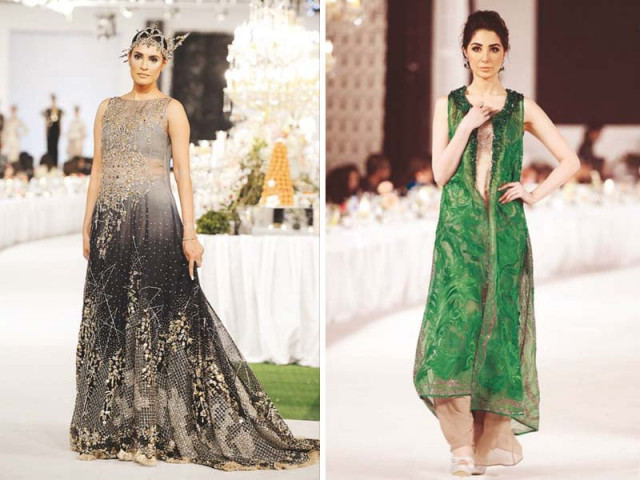The man-tra behind PFDC
Saad Ali talks about the growing Pakistan Fashion Design Council and corporatisation of fashion

With PFDC’s recent collaboration with Swarovski for a showcase by leading names in fashion, the council has continued to push and promote designers. PHOTOS: PUBLICITY
“I saw a country where very few people are taking initiative and there is just negativity,” says Saad Ali, CEO of the Pakistan Fashion Design Council (PFDC).
Ali, who channelled his business ethics into the world of Pakistani fashion at a time when people were overwhelmed by its glitz and glam alone, explored the industry a decade ago with the vision to corporatise fashion. With the industry often trivialised as an acquired taste, Ali feels it is growing into one that is just as much about developing business acumen as it is about unique aesthetics. The Express Tribune talks to the man behind PFDC to explore how far the Pakistani fashion industry has come.
With PFDC’s recent collaboration with Swarovski for a showcase by leading names in fashion, the council continues to push and promote designers. Speaking about getting Swarovski on board, Ali states, “Developing countries are a huge market and Swarovski was always interested. All they needed was the right launch pad, which we provided them with.” PFDC gave the brand market surveys, industry overviews and the chance to meet designers. “We also gave them complete control over Swarovski Crystal Couturiers show and they were very happy with our designers.”

Commenting on the changing face of the fashion industry, Ali remarks, “From my point of view, things are transforming very fast. Wait another five years and witness the renovation of the retail environment.” He adds, “International brands may not do as well because of the exchange rates but our local brands are becoming bigger and better.”
Ali put his vision into practice with Karma, which started with 10 people in 2013 and went up to 600. In a sector that is underdeveloped, everyday was a challenge for him. But contrary to popular people, Pakistan is the land of opportunities because developed countries are already saturated with people. “In countries like ours, we tend to settle for mediocrity. All businesses run with regulations and that’s what local fashion needs — the right focus and respect,” says Ali.
Fashion weeks are infamous for delays, but Ali holds that, since the guests themselves don’t arrive on time, it becomes a bit of a catch-22 situation. “I hire about 11 companies for fashion weeks, from PR to security to logistics to show production to exhibition area management, and when these many fronts are involved, unforeseen circumstances come up occasionally,” he explains. Looking back at the Sunsilk Fashion Week, where there was a long delay due to a safety-related issue, he states, “It’s not easy to organise an entire fashion week.”

On the criteria for choosing designers, Ali shares, “Initially, we would approach designers because no one knew our vision and credibility and they would be apprehensive.” The situation today, however, has changed. “Now, we have introduced rules. The collections must be cohesive and we must see the sketches,” he states. “We had a clear goal from the first day, which was to change the fashion industry of Pakistan by getting serious people involved. If your collection is worth it, it will be up there.”
PFDC’s retail store houses 65 designers, whose performance is measured and they are asked to leave if they’re not selling so they have to reinvent. They opened a store in India two years ago on the condition that the board outside would fully read PFDC, which Saad recalls as a milestone. “I didn’t want fashion weeks to be a sponsorship platform. We wanted to be a marketing platform. We needed them to be a launch pad for products and be relevant,” he says about his vision of the project.
Published in The Express Tribune, March 25th, 2015.
Like Life & Style on Facebook, follow @ETLifeandStyle on Twitter for the latest in fashion, gossip and entertainment.

















COMMENTS
Comments are moderated and generally will be posted if they are on-topic and not abusive.
For more information, please see our Comments FAQ